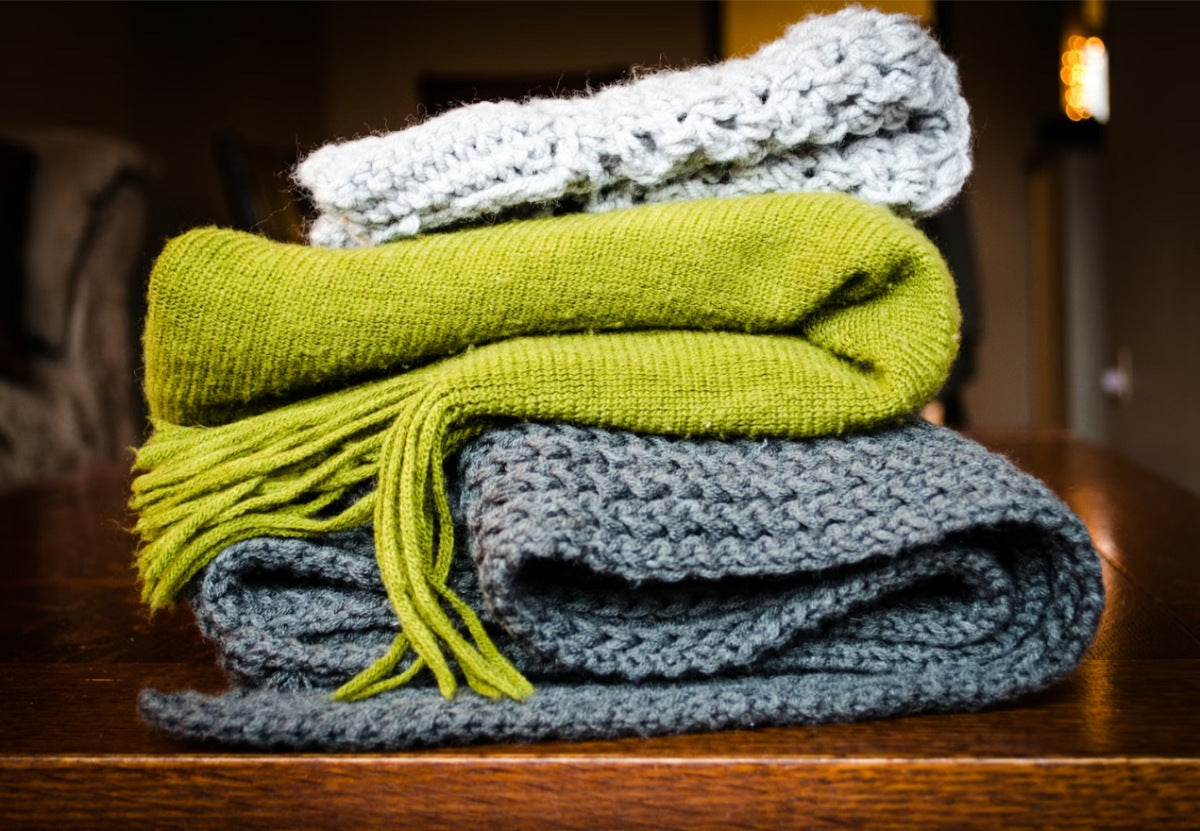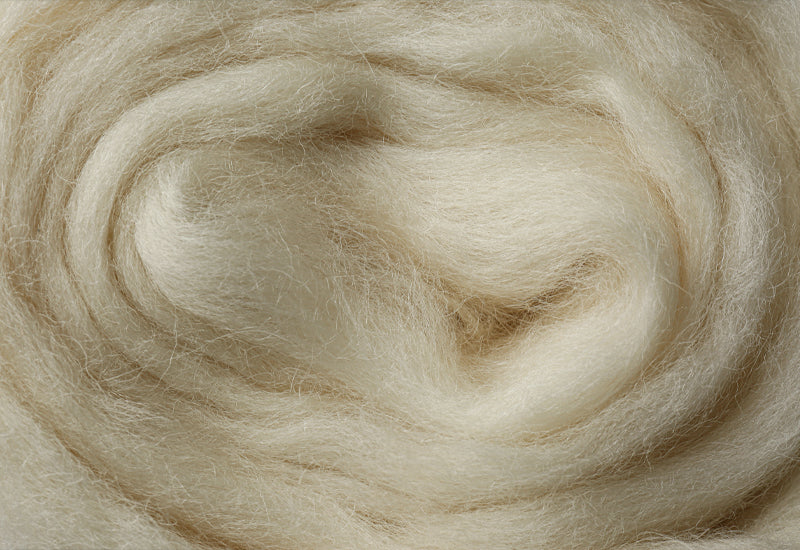As the days get warmer and the summer holidays approach, it’s time to get those summer fabrics freshened up and ready to go! Check out our simple guide on how to care for your linen, cotton and silk garments, so they stay fresh, soft, and clean all summer long.
In this blog we’ll discuss:
- How to care for linen
- How to care for cotton
- How to care for silk
Their lightness, versatility and breathable structures make these 3 fabrics must-haves for your 2025 summer wardrobe.
HOW TO CARE FOR LINEN: LIGHT, BREATHABLE & WORTH THE EFFORT
To care for linen, you should wash it very carefully, either by hand or on a gentle cycle at between 30-40℃. It should never be tumble dried, only air dried and stored in a clean, dry place, away from direct sunlight.
Typically, either hand-wash linen, or use a gentle washing machine cycle, always ensuring that you check the label for instructions! Check out the image below for deciphering laundry label symbols.

Linen is light, breathable and a perfect summer fabric for keeping cool through the warmer weather. It is also fantastically eco-friendly and biodegradable, making it one of the most sustainable fabrics around.
When cared for correctly, linen summer garments can last up to 30 years whilst maintaining their shape, colour and super soft feel.
WASHING LINEN
Linen should be washed on a gentle cycle at between 30-40℃, however you should always check the label in case of specific fabric care instructions. Washing linen in very hot water will likely cause it to shrink or fade in colour. Remember, you should always check the label for specific garment instructions.
Skip the fabric conditioners when washing linen, as these tend to leave a residue that linen doesn’t love. Instead, opt for a gentle, non-bio Laundry Liquid to ensure your garments remain in fantastic condition.
Whilst July brings gorgeous sun, it also brings linen’s worst enemy…greasy suncream stains! But don’t worry, to remove oil stains from your linen garments, follow our 5 simple steps:
- Gently blot the excess oil with a clean paper towel or cloth. Avoid rubbing the stain, as it can spread the oil.
- Pour a small amount of the delicate laundry liquid onto the stain. Slowly rub this into the fibres stained with oil.
- Pour a small amount of liquid laundry into a sink or bucket of lukewarm water. Submerge the stained clothing item and allow it to soak for 30 minutes.
- Carefully hand wash the garment in the receptacle, there’s no need to harshly squeeze or wring out a linen garment.
- After washing, roll the garment in a towel to get rid of excess water. Then air dry it flat so that it keeps its shape. If you put it in a dryer before the stain is fully removed, the heat can set the stain and make it much harder to get out!
By following these super easy steps, you can ensure that your linen stays looking and feeling fresh throughout the whole summer!

DRYING & IRONING LINEN
To dry your linen garments, you should air dry them, by laying them flat on a clean towel, away from direct sunlight. This will ensure that they keep their shape and maintain their soft texture.
It is not recommended to tumble dry linen, as the heat and rigorous movement of the dryer can damage the linen fibres and weaken the fabric over time. Tumble drying can also cause the fabric to shrink by between 10-15%, which is the last thing you need just before your long-awaited trip to Greece!
Whilst it is possible to iron linen, using a Steamer is the better option, as linen is an incredibly delicate fabric and the heat from an iron can cause damage to your garments.
To steam your linen garments, you should carefully hang them up with a clean hanger and, holding the steamer a few inches away from the fabric, use vertical strokes, starting at the top and working your way down. For particularly stubborn creases, hover the steamer over the creased area for a few seconds and then watch them fall away!
STORING LINEN
To ensure your linen stays in the best possible condition, you should store it in a clean, dry place, away from direct sunlight. To protect smaller items of linen clothing, you should carefully fold and store them in smaller storage cubes.
To protect your larger linen garments like dresses from dust or clothes moths, you should carefully hang them up and place them in large Garment Bags. Make sure all garments are clean before storing, as this helps prevent moth damage. This way, they’ll stay clean for longer and lock in their freshness!

HOW TO CARE FOR COTTON: SIMPLE YET SENSITIVE
To care for cotton you should opt for hand washing, air drying and ironing on a low heat. This way, your cotton garments will last for longer and be less susceptible to fibre and thread damage.
Cotton is one of the most breathable fabrics out there, making it a staple choice to have in your summer wardrobe! While cotton isn’t too complex to care for, it can be quite a sensitive fabric, often prone to oil stains, creasing, and loose threads.
WASHING COTTON
When washing cotton garments it’s best to opt for hand washing, as this will ensure no damage occurs to the fabric. To hand wash cotton clothes and keep them in pristine condition, follow these simple steps:
- Pre-treat any stains with a delicate laundry detergent and leave for 10 minutes.
- Fill a clean sink with water between 20-30℃ and add about 15ml of laundry liquid under the running tap, using your hand to froth up the water.
- Immerse the cotton garment in the water and gently agitate before leaving to soak for 15 minutes
- Rinse with cool water, gently squeeze out excess water and then lay it flat on a clean towel to dry.
DRYING & IRONING COTTON
To dry cotton garments, avoid using a tumble dryer, as this can cause the fabric to shrink and become damaged over time.
Instead, hang cotton garments carefully over a drying rack away from direct sunlight, as sunlight can cause the colour to fade.
Usually, you can safely iron cotton garments on a low heat. However, you should always check the label in case there is a blend of fabrics that make up the garment. When ironing cotton, ensure that your ironing board and iron are both completely clean.
To clean your iron, first ensure that it is unplugged and completely cool. Then, wring out a microfibre cloth after it has been soaked in slightly soapy warm water and carefully wipe down the iron plate, checking you’ve not missed the sides or back corners.
After wiping with soapy water, rinse the cloth, wring out again and wipe down once more, ensuring no soapy suds are left on the iron. Leave to dry for a few minutes and then your freshly cleaned iron is ready for use!
When ironing cotton garments, iron inside out and use long sweeping strokes to iron out the creases, ensuring that the iron does not stay static on one part of the fabric.
To remove stubborn creases, spray some Ironing Water on the fabric before carefully running the iron over the crease. The ironing water will not only leave your clothes smelling beautifully fresh, but will also help the cotton threads to release their crease.
Once all creases are removed, hang up your garments on a clean, dry hanger and leave to aerate for 10-15 minutes, before storing away.
STORING COTTON
To store your cotton garments, you should keep them away from direct sunlight and place them either in storage bags, or hung up in a cool, dry place.
When folding cotton garments, it’s important to keep in mind that cotton creases easily. A foolproof way of making sure creases are minimal, is to fold seam to steam and make as few folds as possible. Once folded, lay them flat and pop them in a storage bag for safe keeping.
If you are hanging your cotton garments in a wardrobe, consider using Non-Slip Hangers to avoid your freshly ironed garments from ending up on the floor!
If you want to go the extra mile to ensure your cotton garments stay fresh for longer, you could use a Hanging Sachet, which will not only leave your clothes smelling great, but will ward off those pesky moths and stop them from chewing holes through your best summer trousers, especially if garments are stored clean. Moths are attracted to natural fibres that carry body oils, sweat or food residue, so cleaning garments before storage is key.

HOW TO CARE FOR SILK: SUMMER'S SOPHISTICATED TOUCH YET
To care for silk (which is arguably the most sophisticated part of your summer wardrobe), you should hand wash or dry clean and air dry very carefully, never tumble.
Silk originated in China and was discovered by an Empress from the East and is considered so precious that it has even been used as currency in different parts of the world.
To ensure that your silk stays in wonderful condition, you should follow our simple guide on how to wash, dry and store silk.
WASHING SILK
Due to how delicate silk is, it is best not to machine wash your silk garments, as they are prone to spoiling. If your silk garment doesn’t have a label and you’re not sure it can be hand-washed, you should find out if the colours on the silk will bleed, also known as testing its colour fastness.
To find out whether the colours in your silk garments will bleed when washed, you can perform this simple test:
- Wet a small, discreet section of the fabric with a small amount of warm water.
- Take a cotton bud and gently press it a few times onto the wet area of the silk.
- If the cotton bud comes up clean, then the silk can be hand washed, but if the cotton bud picks up any colour from the fabric, then it will need to be dry cleaned.
Once you’re completely sure that your silk garment can be hand washed, then fill a sink with cool (not cold) water and add a small amount of silk detergent to the water and submerge your garment.
Ensure you keep a close eye on the silk whilst it’s being soaked, in case you notice any small signs of bleeding. Constantly but gently, swirl your silk around in the water for 4-5 minutes for small items and up to 25 minutes for larger items.
To rinse the silk, don’t squeeze it or ring it out. Instead, refill your sink with clean water and resubmerge the silk, swirling it around. Repeat this step a few times until the water runs completely clear and free from soapy suds.
DRYING & IRONING SILK
Unless you want your silk to have a very short lifespan, it should never, ever be tumble dried! Rather, carefully lay the silk out between two dry, clean towels and then carefully roll up the towels (with the silk inside) a few times, or until the silk is no longer sopping wet.
Once your silk garment has been towel dried, lay it flat on a clothes rack without using any pegs, and away from direct sunlight. Depending on the size of your garment, it should be dry within about 30-60 minutes and then it’s ready to be steamed and stored!
Very often, silk dries without any creases and can be stored away immediately (what a dream!)
If your silk garments do happen to have any creases, the best option is to steam them rather than iron them, as the direct heat from the iron can cause damage to the silk fibres, or even burn the fabric.
To steam your silk garments, carefully hang them up on a clean hanger and use downward strokes, with the steamer nose just a few inches away from the fabric. Let your silk hang for a further 5 minutes after using and then carefully store it away!

STORING SILK
Silk garments should be stored in a cool, dry place and away from direct sunlight. Never store away unclean silk garments, as natural oils and dirt can degrade the fabric over time and attract moths.
When storing accessories like silk scarves, you should fold and place them inside a Fabric Storage Box or bag, this way they will still be able to breathe and stay looking, feeling and smelling fresh.
If you choose to store silk garments in your wardrobe, ensure you use a clean, dry hanger and try to not suffocate it by placing it too closely to other garments.
Let us know how you get on with caring for your summer silks!
NEED HELP?
So there you have it, my foolproof, summer fabrics care guide!
Taking a little extra time to care for your summer garments is the key to maintaining a long-lasting wardrobe that looks, feels and smells as good as new.
Treat your fabrics well and they might just return the favour, one hot summer’s day at a time!
For more advice on caring for your summer fabrics, get in touch with our team and we’d be happy to help.




